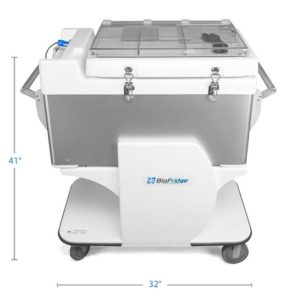Importance of Safe Transportation of Blood
Blood transfusions are an important part of modern medicine. Blood collected from a donor often goes through a number of steps before reaching the recipient. These include collection, transportation and storage.
Safe transportation of blood is particularly challenging and risky, considering blood could encounter risks related to environmental extremes or improper handling. Such risks involved in transporting blood between hospitals, may contaminate the blood leading to infection, allergic reactions, and even death in the recipient.
Storage
Blood is usually broken down into its components as each component requires to be stored under specific temperature conditions. According to the regulations by the FDA, whole blood collected from the donor is to be stored immediately at temperatures between 1-6º Celsius.
When broken down into plasma, it needs to be frozen and stored at ≤-18ºC. Platelets are to be stored at 22º Celsius, and need to be constantly agitated to prohibit the accumulation of metabolites. Safe storage of blood also requires the blood bags to be routinely examined for any form of contamination, leakage and appearance.
The Basics of Blood Transportation
Transportation of blood is a particularly delicate procedure. Blood is usually transported using blood bags that are discarded once used to avoid future contamination. Syringes used on the donor are discarded as well for the same reason. Maintenance of required temperatures is crucial even during transportation.
As per the Code of Federal Regulations (21CFR640.4) by the FDA, “If transported, the blood must be placed in temporary storage having sufficient refrigeration capacity to cool the blood continuously toward a temperature range between 1 and 10 deg.C until arrival at the processing laboratory.”
If blood is exposed to temperatures deviating from the mentioned range, they could lose their potency. This could lead to wastage of valuable and limited resources. Thus, blood gathered from donors is immediately placed into temperature-controlled units such as portable refrigerators. These refrigerators are particularly handy when it comes to keeping blood safe and potent till it can be placed into a medical grade refrigerator.
Portable medical refrigerators
A portable medical refrigerator is an easy way to transport blood safely from one location to the next. This could include transportation from donation camps to blood banks, or from blood banks to hospitals/blood recipients.
These portable units are required to perform just as well, or even better, than medical grade refrigerators. They have the additional responsibility of keeping blood safe in the absence of a stable power source.
Transportation comes with certain foreseen or unforeseen risks including environmental extremes, temperature fluctuations, rough handling and so on. These can be particularly damaging to blood components.
Portable medical refrigerators such as the ones by Biofridge are particularly handy for transportation of blood and its components. Biofridge’s units are equipped with internal fans, alarm notification systems, sturdy stainless-steel hardware and downloadable temperature records. They are also aligned with the requirements and regulations by governing bodies such as the FDA and the AABB.
In order to know more, browse through our products for more details. You can also speak to us by dialing 760-233-8847 or writing to us at sales@biofridge.com.



